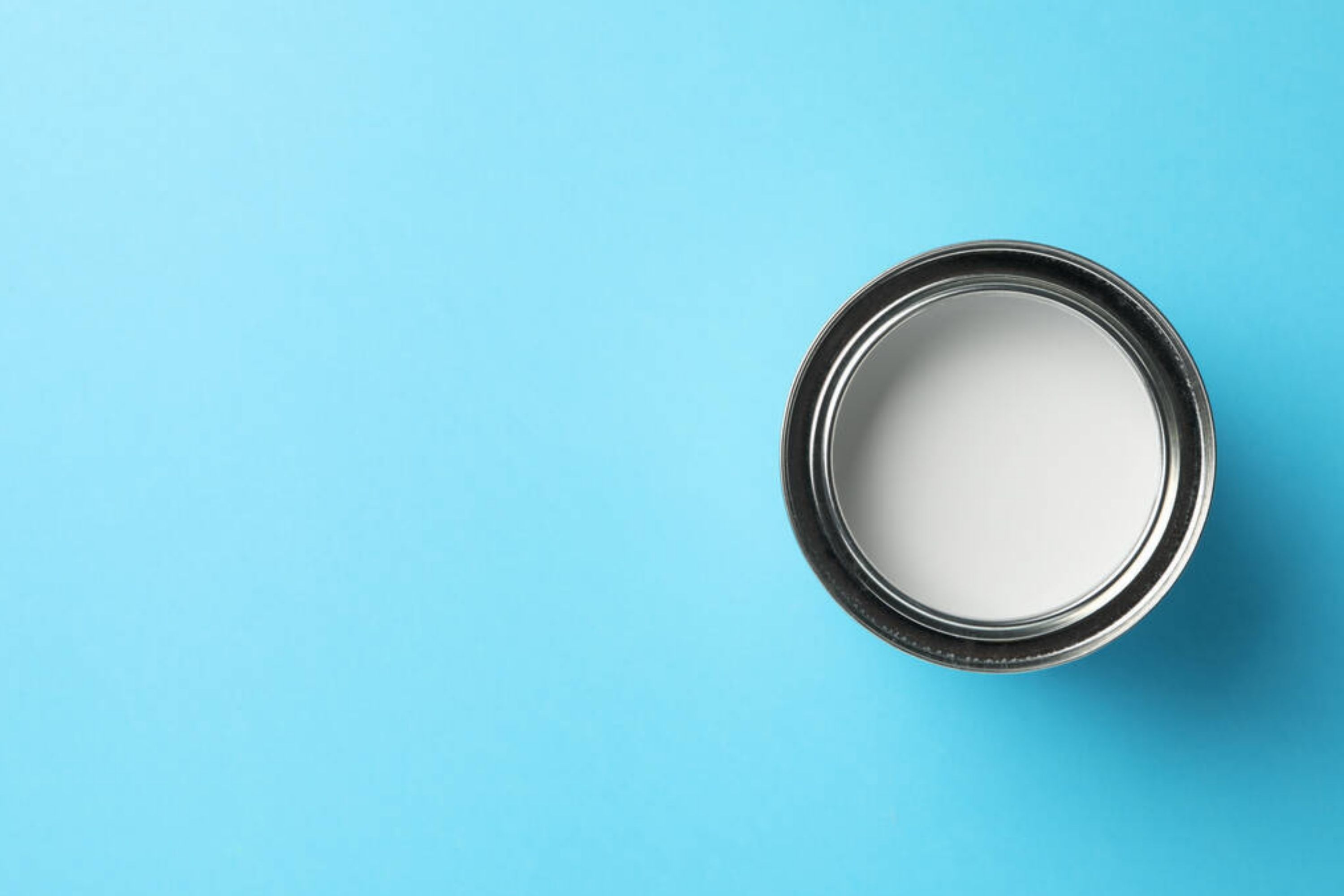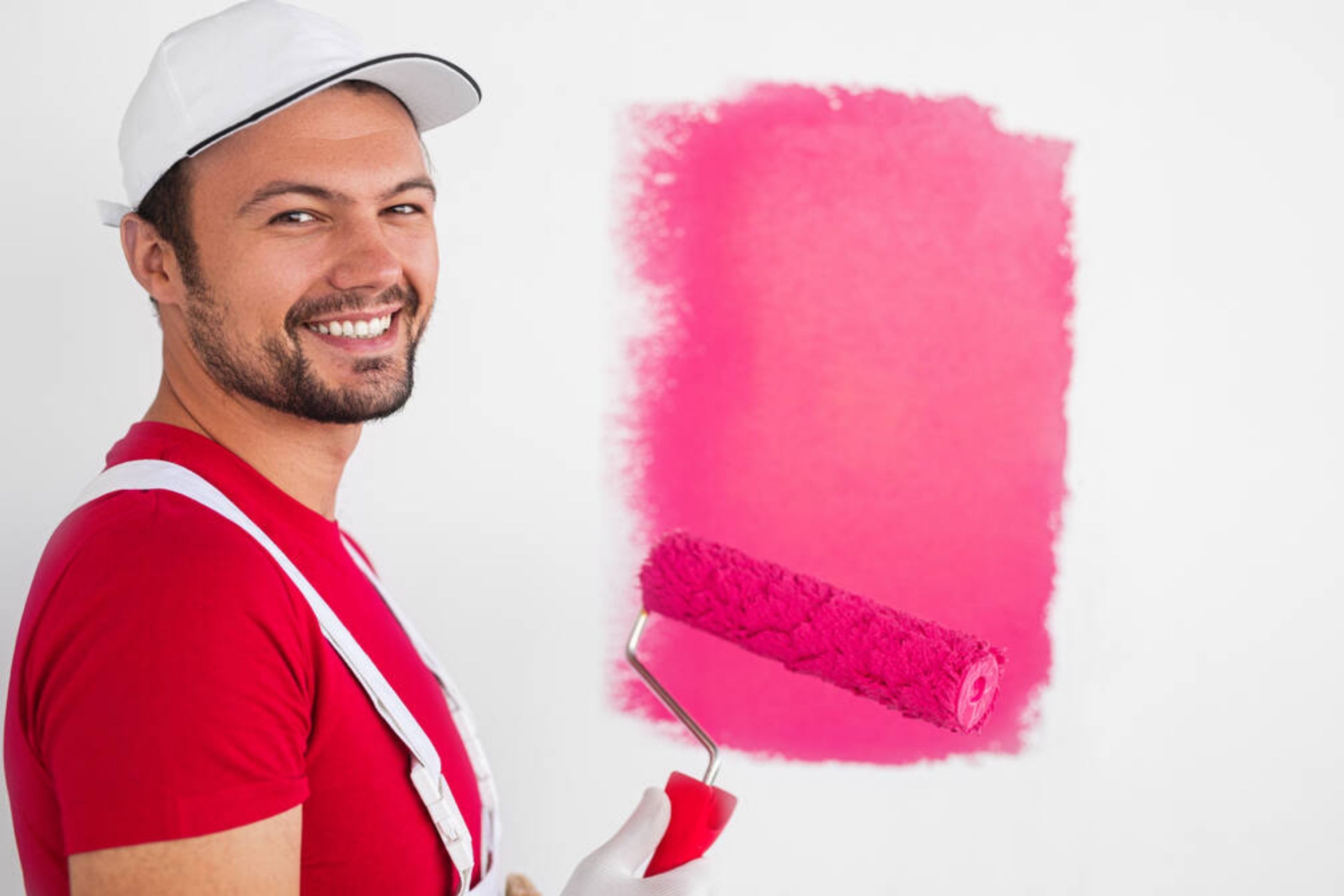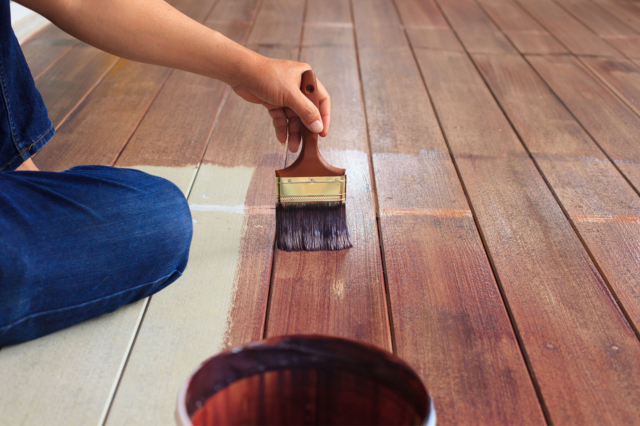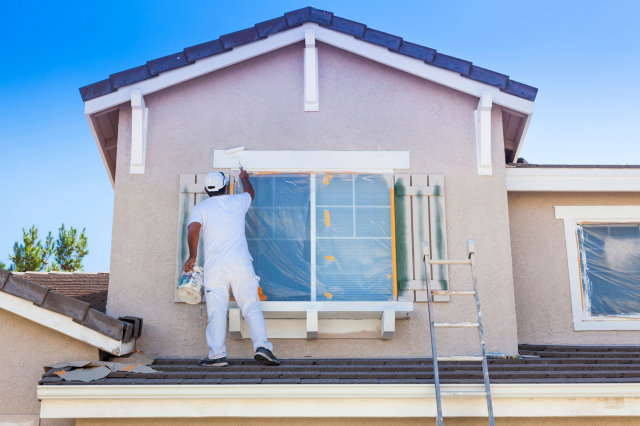Satin vs Gloss Finish
Not sure which one you need? Learn more about their major distinctions!
When you are up to a home painting project, one of the most important things that you have to think of is what type of paint to choose. Of course, your choice will strongly depend on your goals, but except for the paint color and brand, you will surely stumble upon the following question: what type of finish, satin or gloss one, shall I opt for?
And since these two types of finishes do indeed have certain distinctions, we decided to provide you with more information on this subject today.
This is why, in the article below, you will find information about the major gloss vs satin finish differences. In addition, we will explain what makes satin finish vs semi gloss finish different as well.
Like that, being aware of all that, you will be able to decide what type of interior paint you need for your project, and you will be satisfied with the results.
Satin Finish vs Gloss Finish vs Semi-Gloss Finish
Choosing the correct paint is essential for any painting project since, depending on how glossy it is, your finished surface may have quite a different look!
This is why, before you start painting anything, you should decide on whether you need a gloss paint, or a matte/satin paint. Or maybe you’d better opt for the semi-gloss one?
And now you might be wondering what those terms mean, especially if you are not familiar with the types of paint well enough. See, all of those terms (gloss, semi-gloss and matte) refer to the different sheens available in your paint aisle.
The more sheen, the more the paint will reflect light and seem to shine.
For example, gloss has the highest sheen, while flat which is sometimes called “matte” or “satin” has very little or no sheen.
Sheen is also a good indicator of stain resistance and how washable a coat of paint will be. For instance, glossy finishes are much more stain-resistant than satin and flat ones.
Gloss is also very easy to wipe down and wash, while low-gloss paints take a little more effort to clean the surface painted with it.
This makes higher-gloss paints very useful in kitchens, bathrooms and some dining rooms by the way – all the places where we tend to deal with stains, blots, and other signs of our activity.
They also make for striking entrances, such as front doors.
However, all these features are not the only differences between these types of paint!
To help you out and figure out what else makes gloss, semi-gloss and satin finish distinct, we suggest you read on and check out the comparative chart we prepared for you.
| Sheen | Stain-Resistance | Washability | |
|---|---|---|---|
| Satin | Low/No sheen | Low | Low |
| Gloss | High | High | High |
| Semi-Gloss | Moderate | Low | Low |

Credits: Kiwar, via Crello.com
Table of Contents
Stain Resistance And Washability Of Paint
There is one thing to consider: along with the sheen, the general quality of the paint is also a consideration in stains and how well they can be cleaned.
A good quality satin paint may be more stain-resistant and washable than a low-quality semi-gloss one!
This is why, if you are looking for the paint to apply it on surfaces that you know will be often stained or exposed to any kind of dirt or grime, consider using a high-quality satin finish rather than painting with semi-gloss paint of a poor quality.

Credits: AtlasStudio, via Crello.com
Related: How to Make Oil Paint Dry Faster?
The Level Of Reflectivity
This nuance becomes especially important if you are going to apply your paint onto the surface that has any imperfections, such as holes (or the holes that have been filled in), uneven areas, etc.
See, if you paint such a surface with a gloss or, moreover, a high-gloss paint, all those imperfections will be highlighted!
This is why the major downside of gloss paints is their high reflectivity. Reflective finishes make imperfections in a wall surface much more obvious than low-sheen paints. A satin (or a “matte”) finish is much more forgiving of holes and patches than a paint with more sheen.

Credits: igorr1, via Crello.com
Low-sheen paints such as satin or flat are good on walls that have a lot of holes or holes that have been filled in.
Family rooms, living rooms and bedrooms are all places where artwork and mirrors have been hung over time, so low-sheen paints work well to disguise those holes. Satin is also well-suited for the trim and molding in any room.
Also, sheen (or the level of reflectivity) is the major distinction between gloss, semi-gloss and satin paints.
While semi-gloss and gloss generally offer higher levels of durability, satin still stands up admirably to wear and tear. As a result, beyond sheen, they are highly comparable.

Related: Why Is My Spray Paint Bubbling?
Satin vs Semi-Gloss Paint
If we compare these two, we will see that the semi-gloss finish is somewhat shinier.
With semi-gloss, paint colors may appear slightly altered, depending on the lighting in a space. However, it may also offer a richness that you may not get in a more matte finish.
However, that sheen can be used for good to serve you when needed as in exactly the way you need it. For instance, semi-gloss paint can be a good choice for high-touch surfaces, like furniture pieces and cabinets.
Moreover, since it is durable and moisture-resistant, it can work well in kitchens and bathrooms.
And to be honest, the sheen is usually not so dramatic, which means that this paint can be a better choice when you need to brighten up space or want to highlight trim subtly.
On the other hand, satin paint is a better option if you are concerned about any imperfections on your walls.
See, this type of finish reflects less light, which means that it will make the edges of dents and dings less noticeable.
Additionally, it may work best for larger rooms where too much shine could be overwhelming.

Credits: SasinP, via Crello.com
Satin Paint vs Gloss Paint
If we compare the level of sheen of these two types of finish, we will see that satin paint looks matte, offering only the gentlest sheen compared to the high-shine finish of a gloss.
That can allow these two finishes to work pretty well together! Both offer reasonable durability, which means that they can be used in nearly any room.
However, you should take into consideration that satin paint is often less intense on the walls and provides a more authentic color since it isn’t as altered by reflected light.
Gloss can be excellent for trim and accent pieces, bouncing light and drawing attention to unique room features or furniture pieces.

Credits: IgorVetushko, via Crello.com
Semi-Gloss vs Gloss Paint
These two have the major distinction, and it is also about their sheen! The gloss finish is the shiniest, often dramatically, while semi-gloss still has a shine, but it is a bit more subdued.
This is why gloss paint can work incredibly for molding, trim, and small furniture pieces, but only in case they are imperfection-free when painted!
Those items will visually stand out in the room, which can be an excellent way to highlight certain nuances of your interior design.
However, gloss paint can quickly become overpowering when put on walls. Even when used in a single accent wall. When covering a large area, semi-gloss is generally the better option if you must have a noticeable sheen.

Credits: IgorVetushko, via Crello.com
Satin vs Gloss Polyurethane
If you do any home renovation projects regularly, you might have to refresh your floors as well, not only your walls! And if your floors are made of wood, you surely faced this issue: what type of polyurethane coating to use? Is the satin one better than the gloss one? Or vice versa?
First of all, let us remind those who are not aware of it that polyurethane is indeed a coating that is usually applied to wood floors or furniture.
It provides a level of protection, coating the underlying wood, and decreasing wear over time.
And just like with paints, the major distinction between satin and gloss polyurethane coating is the shine!
Gloss polyurethane creates a high-luster finish, reflecting a substantial amount of light. Satin has a subdued sheen, reflecting less light overall.

Credits: schlosann, via Crello.com
Both options are highly durable, so they can work well in high-traffic areas or high-touch surfaces.
And again, just like paint, satin polyurethane coating is much better for hiding any imperfections. This is why, if you have a wood floor that’s seen better days, satin is likely your best choice.
However, gloss coating can still work for floors as well. It can be overwhelming in large spaces or when there’s a lot of light, however. So we recommend you pay attention to that when choosing a glossy one.
But, if you use area rugs and have larger furniture pieces, the exposed high gloss wood flooring can make a lovely accent.
As for the type of coating that is more suitable for the furniture, it’s all about your personal taste and preference when choosing which one to use.
But in general, both gloss and satin one will work well on wooden furniture.

Credits: kegfire, via Crelloc.om
What About Varnishes?
If you can’t find the difference between varnish and polyurethane, don’t worry, you are not alone! These two are highly similar in fact. Both are clear coats often applied to wood surfaces or furniture.
However, polyurethane is usually only used indoors, while there are outdoor or exterior varnishes.
And, as you could already guess, the major distinction between satin and gloss varnish is also…the sheen! Satin varnish is not as shiny as gloss varnish, as you surely know.
However, both types of varnish offer similar levels of durability and protection, making wood water- and UV-resistant, as well.

Credits: gorgev, via Crello.com
These varnishes are mostly used on wooden furniture that is kept and used outdoors. This can include chairs, tables, or similar pieces. Spar or marine varnish is highly popular for boats, though it could be used on furnishings as well.
There are even those who apply these varnishes (not both at the same time, of course!) onto their decks hoping that those will protect the decks from UV damage.
However, as for the UV protection, we would like to note that a good stain can also provide a decent protection to the wood and besides, it is much easier to handle.
So, ladies and gentlemen, now you know almost everything that a common person needs to know about finishes, varnishes, and their major distinctions.
With all the information that we have provided you with, you should not have any complications with choosing the right paint or varnish from now on. And thus, all your home painting projects will be way more successful and easy to make than before.
Ever wished paint sampling was as easy as sticking a sticker? Guess what? Now it is! Discover Samplize's unique Peel & Stick samples. Get started now and say goodbye to the old messy way!
Get paint samples




Frequently Asked Questions
⭐ What rooms is semi-gloss paint best to use in?
It is best for the kitchen, bathroom, kids’ room, as well as for hallways, doors, windows, and cabinets.
⭐ Can I use gloss paint on the ceiling?
No, it’s better for trims and cabinets, as well as for the doors and windows. But not for the ceilings.
⭐ Can satin paint be used with high-gloss paint of the same color on the same object?
Yes, it can. You can apply the high-gloss to create shiny strips or designs!
12 thoughts on “Satin vs Gloss Finish”
Leave a Reply








I’d say that the satin finish will look better on bathroom walls. I used to have my bathroom walls painted with the paint that had this satin finish, and the walls always looked as if they were wet! When I repainted them with the matte finish paint, everything started looking much better. But it’s my personal opinion.
Could you pelase recommend which varnish, satin vs gloss, is best for acrylic paintings?
I’d say that in terms of durability, they are equal. What makes them different is the appearance they give to the painting. E.g., satin varnish has a bit of a sheen to it, but is not glossy. Satin varnishes are perfect for giving your painting a subtle shine without making it shine like a glass! But gloss varnishes will make your canvas really shiny!
Which finish, gloss vs satin polyurethane, would you recommend as the one with higher durability?
Hi! Well, both have the same term of service and both are equally durable. So, I guess you should consider the type of finish you want to have. E.g., a gloss polyurethane finish is very slippery, while satin polyurethane finishes provide a smooth feeling surface.
Which kind of finish (satin vs gloss vs matte) lasts longer on a surface?
I’m not sure, but in my opinion, a glossy finish is more burable. It’s easier to clean and it’s harder, as far as I know, which means it is more durable, right?
If you compare satin vs gloss wood finish, which one lasts longer? I’m trying to choose the finish for my wooden floors now, but since it’s a living room floor, it must be resistant to heavy traffic.
I guess that satin wood finish will be better for your living room floor. A glossy finish is more prone to scratches and other sorts of damage. Besides, all of them will be clearly seen on a glossy surface. But with the satin wood finish, there’s a higher chance that your floor will stay good-looking longer.
Do I need to apply varnish onto my wooden furniture after I paint it with gloss paint?
Hi! Can anyone tell me how to remove a stain from a gloss painted wood top? I tried baking soda and a few other commercial cleaners but there’s no significant effect.
Hey there. I can suggest you use another method. What I did when I had to de-stain my wooden tea table was that I took a clean damp cloth, applied bleach onto it, and left this cloth on the stained area of the table. You will have to check the stain every few minutes, and then rinse the area with water and start again.
This is a rather time-consuming method, but it works.